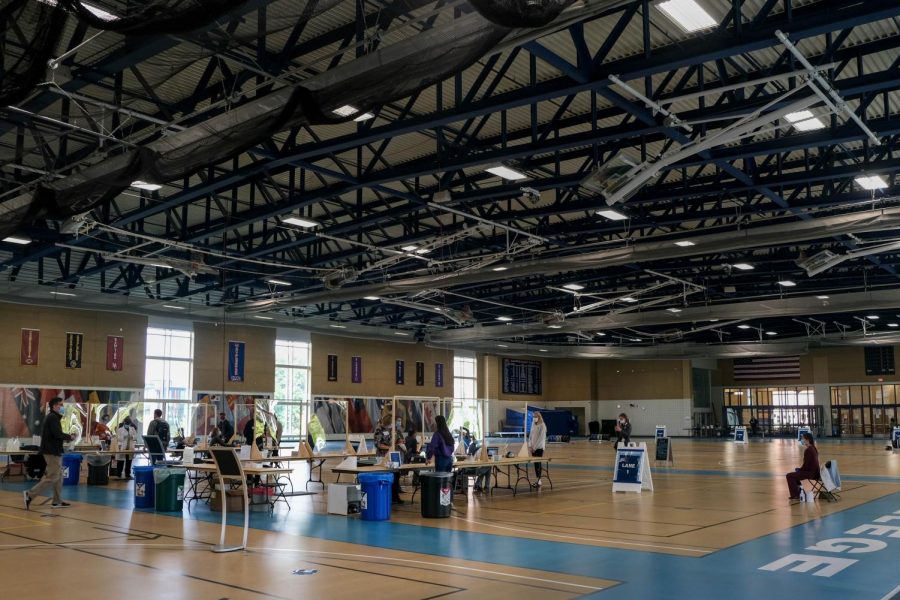What happens to your COVID-19 test?
September 10, 2020
At this point, presumably almost every Macalester student who live on-campus and every student residing off-campus in the Twin Cities has completed the first round of required asymptomatic COVID-19 testing. Some have already completed the second round as well.
Where do these tests go; where are the results analyzed? How do the results of the swab you stick up your nose become a notification in your email?
What follows below is a step-by-step guide to what happens to your COVID-19 test, along with actors at play that administer, process and analyze the tests.
1: The first step in the process is to place an order through PWN Health, using the LabPass software. PWN Health is a company that provides oversight and care coordination, including physician reviews of testing orders for COVID-19 testing programs. Their physicians review each Macalester student’s testing orders.
The order for the actual COVID-19 diagnostic test is placed through the Broad Institute — an institute out of Massachusetts that has created a novel automation system for COVID-19 testing. In mid-March, the Institute converted a section of their lab into a COVID-19 testing facility in order to serve public health needs.
What began as a center only analyzing testing for Massachusetts and its surrounding areas has now analyzed and distributed over one million COVID-19 tests. They now also analyze COVID-19 testing for over 100 colleges and universities as schools reopen across the country.
Macalester utilizes the services of PWN Health and the Broad Institute through CIC Health, a company that provides broad logistical support and coordination for COVID-19 testing. CIC Health employs the Broad Institute’s testing capabilities and the PWN Health clinician network in order to provide the resources for COVID-19 testing.
CIC Health created a specific “Back to School” program that uses these companies’ resources to help colleges across the country open and operate safely.
Macalester had to meet a series of requirements set out by CIC Health, including testing over 1,000 people for the fall semester. Macalester is not currently committed to ongoing testing.
2: You’re now handed a swab by a Homeland Health Specialist nurse, a Minnesota-based provider of medical and vaccination services. The swab and test tube you see is provided by the Broad Institute. The nurse instructs you on how to complete your self-administered COVID-19 test. You have to stick a swab up your nose.
The test you’re completing is a COVID-19 RT-PCR test, or a real-time transcription-polymerase reaction test, which will indicate whether or not you are currently infected with the SARS-CoV-2 virus, which is the virus responsible for COVID-19. It is not an antibody test and cannot tell if you have already been infected with COVID-19.
This test has received an Emergency Use Authorization (EUA) from the Food and Drug Administration (FDA), which allows the test to be self-administered under the guidance of a medical professional.
3: You then place the swab into a test tube which will be shipped to the Broad Institute.
The test tube you place your test in contains a barcode, which allows for tracking and identification of your sample by the Broad Institute.
4: Once the tube reaches the Broad Institute — in 72 hours or less in order for the test to be accurate — it is unpacked in a sterile environment and registered to the Institute’s online tracking system.
The Broad Institute boasts a quick turnaround time — they are generally able to process your COVID-19 test within 24 hours. Adding up the amount of time it takes for your test to be shipped to Massachusetts and then the 24 hours it takes the Broad Institute to analyze your sample, one waits approximately 48 hours before getting their results.
5: Your test is then placed into an automated liquid-handling machine, which handles the heavy lifting in the testing process. Analyzing dozens of tests at once, the machine extracts any strands of viral RNA from your sample.
6: Next, the viral RNA plate is inserted through one of the Broad Institute’s “high-throughput quantitative polymerase chain reaction” machines. This machine has the ability to copy the genetic material of COVID-19, which makes it easily detectable in our RNA.
7: Finally, a fluorescent dye is mixed with your sample that sticks to viral complementary DNA. The machine measures the presence of a fluorescent signal, revealing whether you currently are infected with the COVID-19 virus or not.
8: These results are then sent to PWN Health, who notifies you of the results. If your test is positive, you receive a phone call from a board-certified physician who will go over your results with you. If they’re negative or inconclusive, you’ll receive an email.
For more information on COVID-19 at Macalester, see Macalester’s COVID-19 website and The Mac Weekly’s coverage here.
Corrections:
A previous version of this article stated that the college is committed to a testing-assurance program at least every seven days. In fact, the college does not have a commitment to on-going testing.
A previous version of this article stated that the test tube from the COVID-19 test contains liquid media, which is inaccurate.















Adriana Saso-Graves • Sep 10, 2020 at 8:34 pm
Something that is important to add is that if your results are INCONCLUSIVE, as mine were, they will ALSO email you. So it’s important to check the email fully (open all the way to the page results) and see if it is negative or inconclusive.